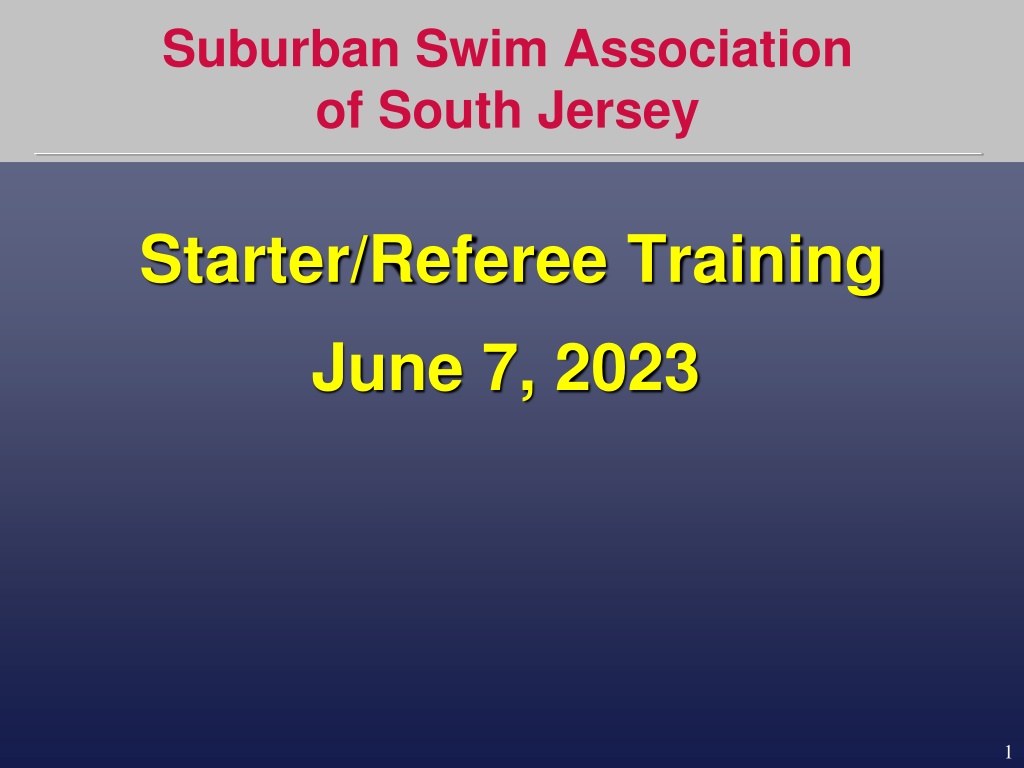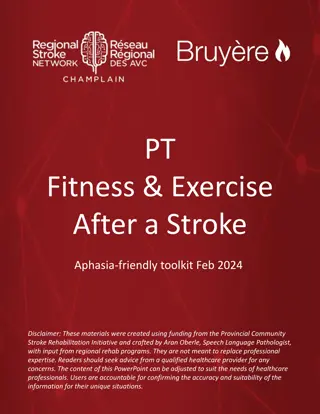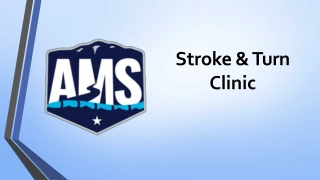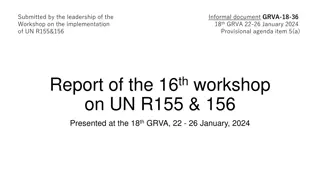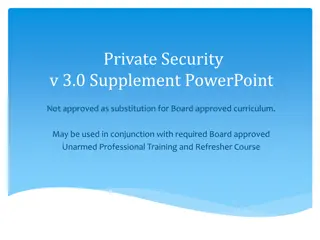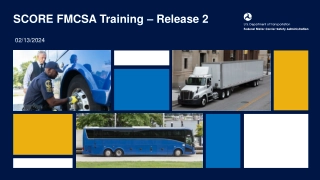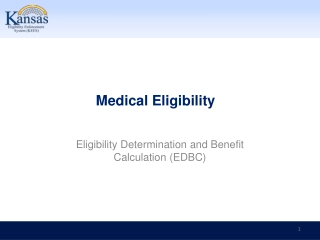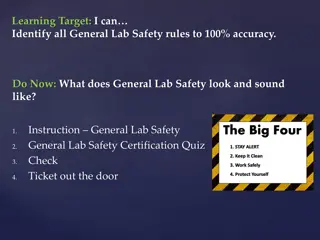Swimming Stroke Rules and Regulations Training
Learn about the rules and regulations of swimming strokes, including backstroke and breaststroke techniques. The training covers key aspects such as stroke review, host and visiting team responsibilities, meet officials' duties, and scorekeeping. Understand the specifics of backstroke starts, finishes, and USA Swimming rule changes. Dive into breaststroke fundamentals, focusing on stroke cycles, arm movements, and head positioning throughout the race.
Download Presentation
Please find below an Image/Link to download the presentation.
The content on the website is provided AS IS for your information and personal use only. It may not be sold, licensed, or shared on other websites without obtaining consent from the author. Download presentation by click this link. If you encounter any issues during the download, it is possible that the publisher has removed the file from their server.
Presentation Transcript
Suburban Swim Association of South Jersey Starter/Referee Training June 7, 2023 1
AGENDA Stroke & Turn Review General Rules Host Team Responsibilities Visiting Team Responsibilities Meet Officials and Duties Events And Entries Scorekeeping Championships 2
Backstroke The backward start shall be used (the swimmers shoulders must be at or past vertical towards the back once their feet leave the wall) Standing in or on the gutter, or curling the toes over the lip of the gutter is not permitted. Prior to the start of the race legal positioning of the feet/toes is the responsibility of the Starter. At the start and after each turn, the swimmer may remain submerged for not more than 15 meters. Upon completion of each length, some part of the swimmer must touch the wall. During the turn, the shoulders may be turned past vertical toward the breast, after which an immediate, continuous single arm pull or double arm pull may be used to initiate the turn. The swimmer s shoulders must be at or past vertical towards the back upon leaving the wall. At the finish of the race the swimmer must touch the wall while on the back. https://www.youtube.com/watch?v=v5IjKFBIY18 3
Backstroke Finish USA Swimming Rule Change USA Swimming Rule USA Swimming Rule 101.4.2 (pp 24) To Comply with World Aquatics SW6.3 Stroke The swimmer shall push off on his back and continue swimming on the back throughout the race. Some part of the swimmer must break the surface of the water throughout the race, except it is permissible for the swimmer to be completely submerged during the turn and for a distance of not more than 15 meters (16.4 yards) after the start and after each turn. By that point, the head must have broken the surface of the water. Additionally, once some part of the head of the swimmer has passed the 5 meter mark (long course and short course meters) or 5 yard mark (short course yards) immediately prior to reaching the finish, the swimmer may be completely submerged prior to the touch. 4
Breaststoke The forward start shall be used (the swimmers shoulders must be at or past vertical towards the breast once their feet leave the wall/platform) Throughout the race the stroke cycle must be one arm stroke and one leg kick in that order. All movements of the arms shall be simultaneous and in the same horizontal plane without alternating movement. The elbows shall be kept under the water except for the final stroke before the turn and for the final stroke at the finish. The hands shall not be brought back beyond the hip line, except during the first stroke after the start and each turn. During each complete cycle, some part of the swimmer s head shall break the surface of the water. 5
Breaststroke (cont) After the start and each turn, at any time prior to the first breaststroke kick a single butterfly kick is permitted. Following which, all movements of the legs shall be simultaneous and in the same horizontal plane without alternating movement. The feet must be turned outwards during the propulsive part of the kick. Scissors, alternating movements or downward butterfly kicks are not permitted except as provided herein. Breaking the surface of the water with the feet is allowed unless followed by a downward butterfly kick At each turn and at the finish of the race the touch shall be made with both hands separated and simultaneously at, above, or below the water level. At the last stroke before the turn and at the finish an arm stroke not followed by a leg kick is permitted. The head may be submerged after the last arm pull prior to the touch, provided it breaks the surface of the water at some point during the last complete or incomplete cycle preceding the touch. https://www.youtube.com/watch?v=6ZXUEfP-Agc 6
Butterfly The forward start shall be used (the swimmers shoulders must be at or past vertical towards the breast once their feet leave the wall/platform) After the start and after each turn, the swimmer s shoulders must be at or past the vertical toward the breast. The swimmer is permitted one or more leg kicks, but only one arm pull under water, which must bring the swimmer to the surface. At the start and after each turn, the swimmer may remain submerged for not more than 15 meters. Both arms must be brought forward simultaneously over the water and pulled back simultaneously under the water throughout the race. All up and down movements of the legs and feet must be simultaneous. The position of the legs or the feet need not be on the same level, but they shall not alternate in relation to each other. A scissors or breaststroke kicking movement is not permitted. 7
Butterfly (cont) At each turn the body shall be on the breast. The touch shall be made with both hands separated and simultaneously at, above, or below the water surface. Once a touch has been made, the swimmer may turn in any manner desired. The shoulders must be at or past the vertical toward the breast when the swimmer leaves the wall. At the finish, the body shall be on the breast and the touch shall be made with both hands separated and simultaneously at, above, or below the water surface. https://www.youtube.com/watch?v=4ajQQQnSKQ0 8
Freestyle The forward start shall be used (the swimmers shoulders must be at or past vertical towards the breast once their feet leave the wall/platform) Some part of the swimmer must break the surface of the water throughout the race except it shall be permissible for the swimmer to be completely submerged during the turn and for a distance of not more than 15 meters after the start and each turn. Upon completion of each length the swimmer must touch the wall. The swimmer shall have finished the race when any part of his person touches the wall after completing the prescribed distance https://www.youtube.com/watch?v=baQJzcnG3oQ 9
Individual Medley The swimmer shall swim the prescribed distance in the following order: the first one-fourth, butterfly; the second one-fourth, backstroke; the third one- fourth, breaststroke; and the last one-fourth, freestyle. The forward start shall be used (the swimmers shoulders must be at or past vertical towards the breast once their feet leave the wall/platform) The stroke for each one-fourth of the designated distance shall follow the prescribed rules for that stroke. Intermediate turns within each stroke shall conform to the turn rules for that stroke. The turns when changing from one stroke to another shall conform to the finish rules for the stroke just completed. The swimmer shall have finished the race when any part of his/her person touches the wall after the prescribed distance. https://www.youtube.com/watch?v=4ajQQQnSKQ0 10
Relay Highlights Freestyle Relay Four swimmers on each team, each to swim one- fourth of the prescribed distance using any desired stroke(s). Freestyle finish rules apply. Medley Relay Four swimmers on each team, each to swim one- fourth of the prescribed distance in the following order: first, backstroke; second, breaststroke; third, butterfly; and fourth, freestyle. Rules pertaining to each stroke used shall govern where applicable. At the end of each leg, the finish rule for each stroke applies in each case. In both the Freestyle Relay and the Medley Relay, swimmers must compete in the order entered. The order entry is considered official when the Referee blows the long whistle to step the first swimmer up onto the block or into the water. https://www.youtube.com/watch?v=BV2dAE0VXTE 11
GENERAL RULES USA Swimming Rules Apply Referee should have copies of USA Swimming rule book SSASJ By-laws PDF versions available on SSASJ.org website Minimum two SSA certified officials must be present for meet to be official (102.10.4) Officials do not need to be from opposing clubs 12
HOST TEAM PERSONNEL SSASJ Certified Referee (1) and Starter (1) SSASJ Certified Stroke and Turn Judges (2) Place Judge (1) Timers 2 per lane with watches Head Timer (with 2 watches) Scorekeeper / Ribbon Writer Scoring Assistant (optional) Runner Announcer (optional) Staging Assistants (3-4 recommended) 13
HOST TEAM Equipment/Supplies Starting System Be sure it is CHARGED! Place Judge Finish Slips DQ Slips for S&T Judges Clipboards and Pencils For Timers All Award Ribbons for Scored Events 1st-3rd for Individual Scoring Heats 1st Only For Relay Scoring Heats Additional Ribbons Optional (e.g. Participation) 14
VISITING TEAM PERSONNEL SSA Certified Stroke and Turn Judges (2) Timers 1 per lane with watches Place Judge Scorekeeper Ribbon Writer Staging Assistants (3-4 recommended) 15
MEET OFFICIALS Referee (Meet / Deck / Administrative) Starter Chief Judge (if available, should be used) Stroke and Turn Judges Place Judges Chief Timer (aka Head Timer) Head Lane Timer and Lane Timers 16
PLACEMENT OF OFFICIALS Starter Start end with starting system Stroke and Turn 4 for 5/6 lane pool; 6 for 8/10 lane pool Opposing teams on opposite sides and/or alternating Place Judges At finish end on opposite sides Head Timer At finish end near timers Chief Judge opposite side of pool from Referee 17
DRESS CODE FOR OFFICIALS White Shirt with Collar Moisture wicking / Tech material recommended Sleeveless with Collar for women okay Front left labeling: Embroidered Swim Official / SSA Official, etc. SSASJ Swim Official Magnet Badge Khaki Shorts, Pants, Skirts, Skorts No Jeans/cutoffs, etc. Sandals, Sneakers, etc. 18
REFEREE DUTIES Oversees meet and all aspects of meet Ensuring the integrity of the sport and of officiating Conduct oneself with dignity and professionalism while ensuring fair and equitable conditions Remain impartial Maintain a current understanding of the rules Foster the growth in expertise of all officials 19
REFEREE DUTIES (pre-meet) Ensure pool setup correct Backstroke flags at correct distance and height Blocks tight and generally square Obstacles removed or blocked (ladders/skimmers) Record names of all officials on Meet Officials Report Form Verify officials against certified officials list Conduct Officials Briefing Assign jurisdictions 20
REFEREE DUTIES (pre-meet) Ensure both clubs provided meet sheets Get reports for extra, non-scoring heats Official meet sheet to scoring table (2 copies) Copies or equivalent reports to Ref and Starter Entry Report by Event, Heat, Lane Ideal: MeetManager Entry Report showing open lanes 21
REFEREE DUTIES (pre-meet) Introduce yourself to coaches to review: If there are any swimmers with disabilities Who to inform on DQs Review events/heats that can be combined Note that no tape (KT tape/other), braces, wraps, casts, etc. are allowed unless approved by Referee Medical exemptions require documentation Coordinate with Starter and Announcer Review inclement weather policy 22
REFEREE DUTIES (During the Meet) Start Meet on Time (Note the Start Time) Observe the Meet - Anticipate problems Treat everyone with respect Activate next event with long whistle when pool is clear and ready to proceed Record Order of Finish (OOF) for scoring heats 23
REFEREE DUTIES (During the Meet) Monitor for false starts (dual confirmation) Review and sign all disqualifications (DQs) Only the active Deck Referee has the authority to accept and sign a DQ and make it official. Have USA-S rulebook and SSA Rules available (not on person) Resolve any disputes as they occur Final say on any disputes over rules 24
REFEREE DUTIES (Conclusion of Meet) Confirm score sheets match How many total points in a fully scored meet? Resolve any discrepancies Sign both meet sheets Meet is not valid unless both sheets are signed Entry cards and DQ Slips divided by team Final meet sheets must be signed by Referee, scanned. Results sent via email by BOTH teams By Monday, 12 noon following Saturday Meet By Thursday, 12 noon following Wednesday meet League Records Entry card signed by Referee 25
QUESTIONS ABOUT REFEREE? Clarifications? Comments? Examples? Situations? 26
THE STARTER Philosophy of Starting Calm and consistent Ensure a fair and equitable start Support the Referee Swimmers must be stationary ; not be motionless Know the hand signals Practice, Practice, Practice Time Trials are great time to practice! 27
Starter Duties (pre-meet) Coordinate with the announcer if one assigned Don t want announcements while starting May need to announce Event and Heat Next Event #16, Boys 11-12 100y Freestyle, Heat 1 Check starting platforms for safety (loose or wobbly) Be familiar with starting system Conduct Timers Briefing 28
STARTER DUTIES TIMER BRIEFING #1 Job: Ensure correct swimmer in correct event, correct lane and correct heat. Have timers ASK swimmer their name. Limit cheering to reasonable amount No electronic devices (cell phones, iPods, etc.) during active events Start on strobe Finish when any part of swimmer touches wall Raise hand if watch issue get head timer s attention Conduct watch test to ensure all watches working and timers know how to reset 29
STARTER DUTIES (During Meet) Stand ~10 ft. from end of pool, next to Referee Speak Clearly - Use a steady, strong voice Announce event (if no announcer assigned) Next Event #23, 2 Heats, Boys 11-12 50m (y) Free Step kids up (or in) following long whistle Event #10: Heat 1 Swimmers step up Ensure swimmers are ready Not fixing goggles or trying to set their feet Ask for QUIET FOR THE START if too loud 30
STARTER DUTIES starting event Issue Take Your Mark command E.g. Close the door Ensure swimmers are stationary before start Use Stand or Relax as appropriate Swimmer(s) not stationary Mic doesn t work or Mic cuts out Button fails to activate starting signal (No horn) Distraction / Loud noise / Camera Flash (indoors) Unresponsive or late arriving swimmer(s) Timer(s) indicate issue (wrong swimmer up, etc.) Watch for false start (with dual confirmation) Combine events (work with Referee) 31
STARTER DUTIES - Backstroke Backstroke Check Toes Prior to Take Your Mark (TYM) Toes, please to all swimmers Toes, please, Lane X Starter is responsible for toes before the start; stroke and turn judge after start 32
STARTER DUTIES False Starts Starter initiates I have a potential False Start. NOT Did you see anything? Must be dual confirmed with Referee or designated official If a swimmer leaves the block prior to the start, this is a DQ. Stand the heat and restart the race without the violating swimmer 33
QUESTIONS ABOUT STARTER? Clarifications? Comments? Examples? Situations? 34
CHIEF JUDGE Supervises Stroke and/or Turn Judges Liaison between Referee and Judges Mentors Judges as needed Reviews calls make by Judges in assigned jurisdiction (What/Where/Why) Ensures DQ slips written correctly and signed Notifies coach of DQ Never coach swimmers 35
CHIEF TIMER Frequently referred to as the Head Timer Assigns timers to lanes and designates head lane timer Starts 2 spare watches on every heat for use as substitutes if any other watch fails Watches lane timers for stopwatch malfunctions 36
HEAD LANE TIMER Determines that the correct swimmer or relay team is present and in the correct heat and lane Determines that relay teams swim in the correct order Any change to the names or order of swimming must be declared to and recorded by the Head Lane Timer before the start of the respective heat Record manual watch times or absence of swimmer in a lane (e.g. NS) 37
LANE TIMERS Must ensure the correct swimmer in correct event, correct lane and correct heat Starts the watch on observing the visual starting signal Stands directly over the lane at the finish and stops the timing device when any part of the swimmer touches the wall Reports their watch time to Head Lane Timer Should not clear the watches until Referee signals with a long whistle 38
QUESTIONS ABOUT OFFICIALS? Clarifications? Comments? Examples? Situations? 39
EVENTS AND ENTRIES Dual Meet Event List Swimmers are Permitted to Swim Up, not down May not swim same stroke across age groups Maximum Entries Per Swimmer 3 Individual / 1 Relay / IM (optional) 2 Individual / 2 Relay / IM (optional) Entry Cards Blue for Away Team Tan/White for Home Team Other color if Tri-meet 40
EVENTS AND ENTRIES (CONT) Only the First Heat is Scored Additional Exhibition Heats Allowed All heats are considered OFFICIAL Times can be used for qualifying for championships Extra Heat Policy Home: even heats; Away: Odd heats 41
DETERMINATION OF OFFICIAL TIME When recorded by properly operating automatic timing equipment, the pad time shall be the official time When a touch pad malfunctions, backup (plunger) time or watch times are used and lane adjustment procedure followed If all lanes malfunction (e.g. system starts late), watch times used and lane adjustment procedure followed. Whenever semi-automatic or manual timing is used, times are determined as follows: If 2 of 3 buttons/watches agree, that is the official time If all 3 watches disagree, the intermediate watch time is official If only 2 watches are available, the time is the average If only 1 watch is available, that is the time 42
DETERMINATION OF OFFICIAL PLACE Place Judges (PJ) take priority over times in absence of fully automatic timing If both PJ slips agree, that is the official OOF If slips do not agree: OOF by times becomes 3rdslip If times match either PJ slip, that becomes official If all three are not in agreement, use Modified Ballot If only 1 PJ slip valid: If a match with OOF by Times, that is official If not a match, use Modified Ballot Note: PJ Slips record Lane Numbers 43
SCOREKEEPING Each team supplies an official scorekeeper Scorekeeper should understand scoring rules Recommended: Scoring Assistant (home team) Receives cards from runner; Circles official time; orders cards by OOF (pending any DQs); compares place slips Each teams keeps their own copy of the score sheet Scorekeepers should compare scores periodically or at minimum when completing each page Names must be written legibly on score sheet First and last name OR first initial and last name 44
SCOREKEEPING (contd) No points awarded for a D.Q. No team is permitted to sweep an event 3rd place points are awarded to opposing team upon sweep IF opposing team has a legal swimmer Ribbons are awarded to 3rd place swimmer regardless of a sweep 45
SCOREKEEPING (contd) DQs for: Swimming too many events Scored in the order swum All excess events disqualified from scoring Final meet sheets must be signed by Referee and one given to each team along with 1 set of place slips and any DQ slips. 46
SCOREKEEPING (contd) Points on bottom of each meet sheet page Individual 1st Place - 5 Points 2nd Place - 3 Points 3rd Place - 1 Point Relay 1st Place - 7 Points 2nd Place - 0 Points 3rd Place - 0 Points 47
QUESTIONS ABOUT SCORING? Clarifications? Comments? Examples? Situations? 48
CHAMPIONSHIPS Times earned at all intra-league meets count towards qualifying for championships Times earned at non-league meets do NOT count Swimmers must swim minimum of 2 dual meets and have at least one valid time in each event in which they are entered (Rule 12, Section 3) Swimmers must compete within their age group for individual events but may swim up for relays (Rule 12, Sec. 6) 49
FINAL THOUGHTS Clarifications? Comments? Examples? Situations? 50
